One of the greatest Italian artists in history was also one of the three most famous masters of the High Renaissance.
Raffaello Sanzio da Urbino (1483-1520) can be described as the embodiment of the Renaissance period. The famous artist was also one of the first superstars of his time.
Raphael’s early death in 1520 at the age of 37 was a great tragedy and abruptly ended this remarkable period in art history.
In this article, you’ll discover some of the most interesting facts about La Velata, a painting by Raphael that depicts a woman who was very close to him.
1. It was completed less than 5 years before the artist passed away
Raphael was a child prodigy who lost both his parents before he reached the age of 12. He was trained in the studio of Pietro Perugino (1446-1523), a master from his native Umbria. in Central Italy.
He quickly exceeded the talent of his master and although he initially worked as Perugino’s assistant, he started earning commissions while he was still a teenager.
He lived a Nomadic existence for several years and traveled between several Italian cities in the first decade of the 16th century.
He had a very prolific period in Florence between 1504 and 1508 and started drawing the attention of influential patrons in Rome. He moved to Rome in 1508 to work for Pope Julius II and stayed here until he died.
He completed La Velata or “La Donna Velata“ in 1516, a time when he was already one of the most famous artists in Europe.
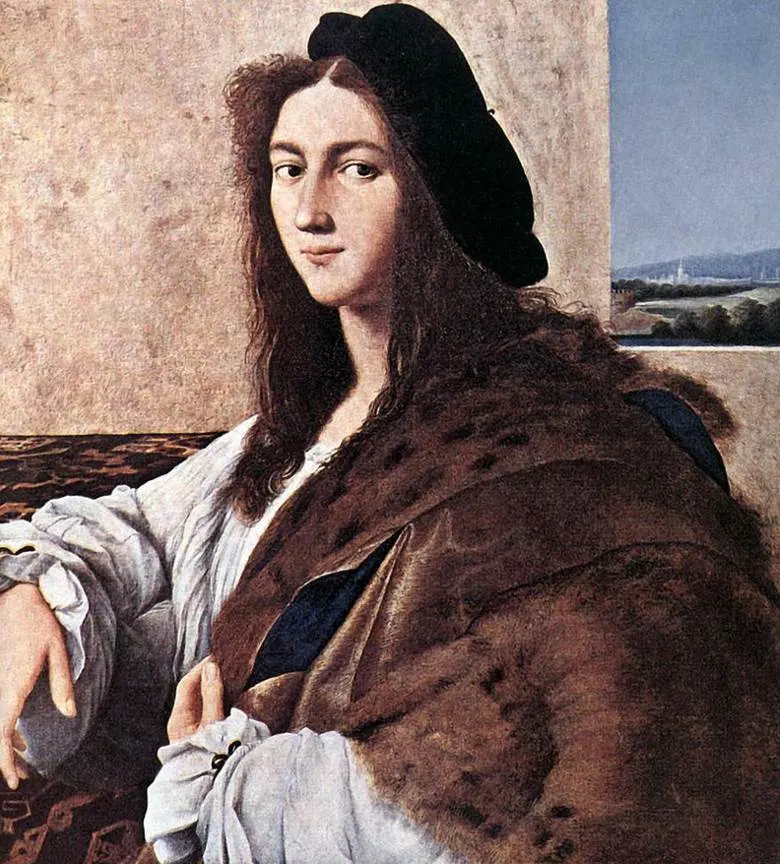
2. It depicts a veiled woman wearing magnificent contemporary clothes

La Donna Velata translates to “The Woman with the Veil.” Apart from this headgear, she also wears very exuberant clothes.
She wears jewelry around her neck and even a pearl in her hair. It’s clear that Raphael wanted to depict this woman as beautifully as possible.
Her amazing dress is adorned with gold and was painted in a way only a few people besides Raphael could at the time.
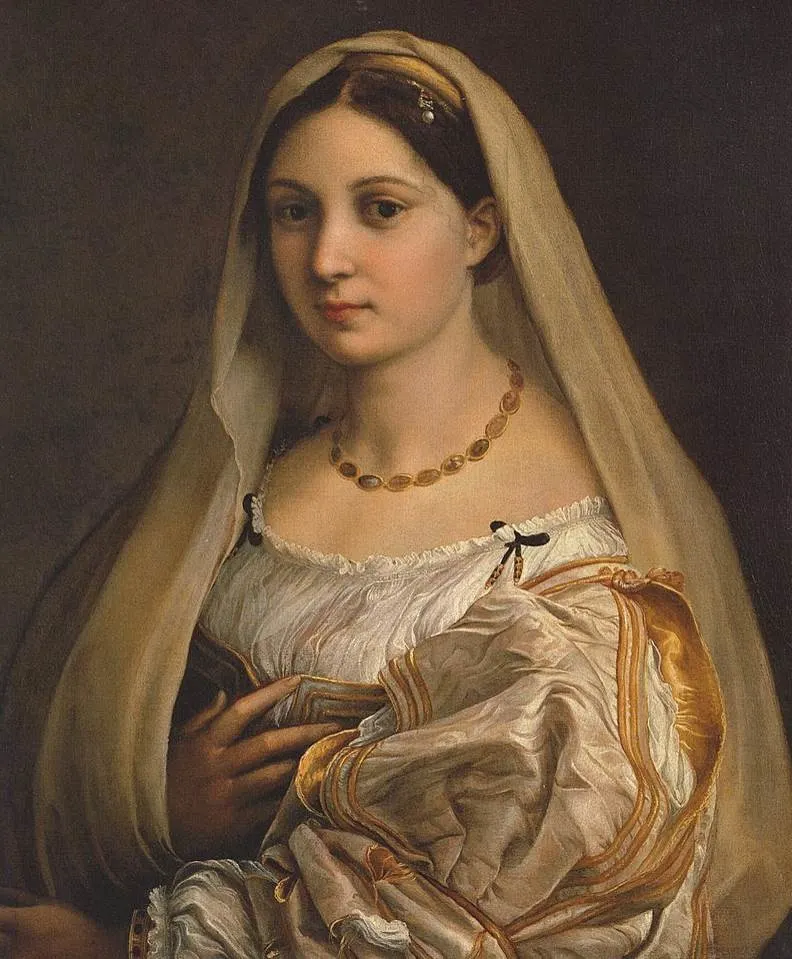
3. The woman has been described as Raphael’s mistress in Rome
Contemporary historian Giorgio Vasari (1511-1574) made no secret of the fact that this woman was Raphael’s lover.
He mentioned her in his famous work “Lives of the Most Excellent Painters, Sculptors, and Architects” and described the painting as:
Portrait of Margarita, Raphael’s mistress … Margarita.
Margarita Luti was Raphael’s mistress in Rome and most definitely the woman he loved the most. Yes, Raphael was a lady’s man who had plenty of affairs during his time.
An anecdote about his work at the Villa Farnesina in Rome is proof of this. It was said that he couldn’t complete his work until his mistress came to live in his vicinity.
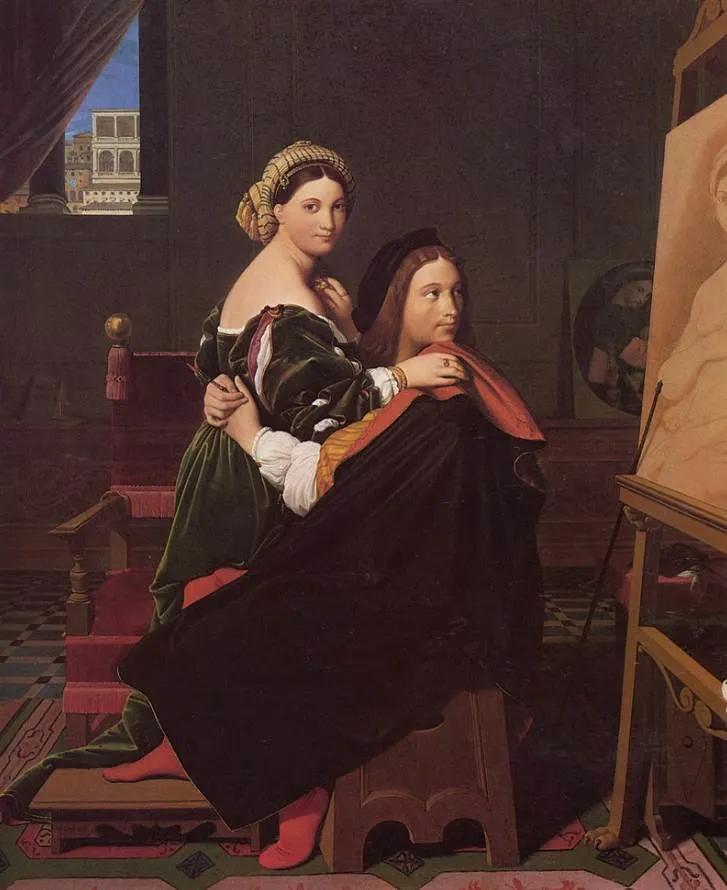
4. It wasn’t the only time that Raphael painted his lover
La Velata was the first of two portraits of Margarita Luti that Raphael completed. The second is called “La Fornarina” and was completed a couple of years later between 1518 and 1519.
This painting depicts his mistress naked from the waist up while she holds her left breast with her right hand.
La Fornarina means “The Baker’s Daughter” and this is probably a reference to the occupation of her father. She only got this name from the mid-17th century so it can be taken with a grain of salt.
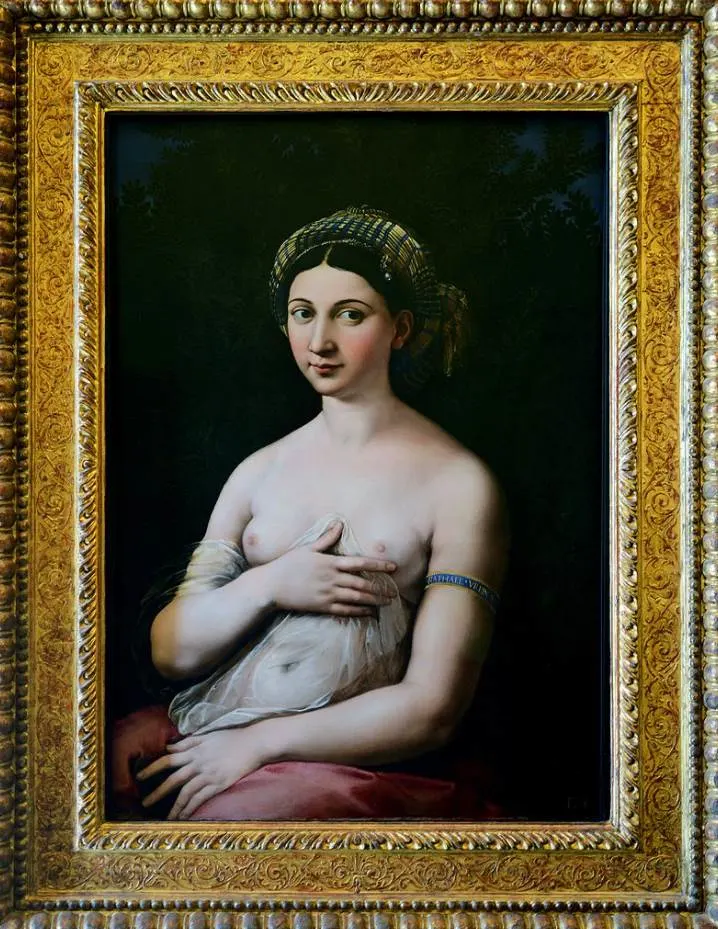
5. Margarita Luti stayed with Raphael until he was on his deathbed
The relationship between Raphael and Margarita was certainly strong, something emphasized by the fact that she remained with him while he was lying on his deathbed.
He was scheduled to marry a woman named Maria, the daughter of Italian cardinal Bernardo Dovizi and one of his patrons, but he continuously refused to do so.
Ironically, he is buried inside the Pantheon in Rome right next to the tomb of his fiancé.
It’s uncertain what happened to Margarita Luti following Raphael’s death. The legend tells that she retired to a convent 4 months after his death to become a nun.
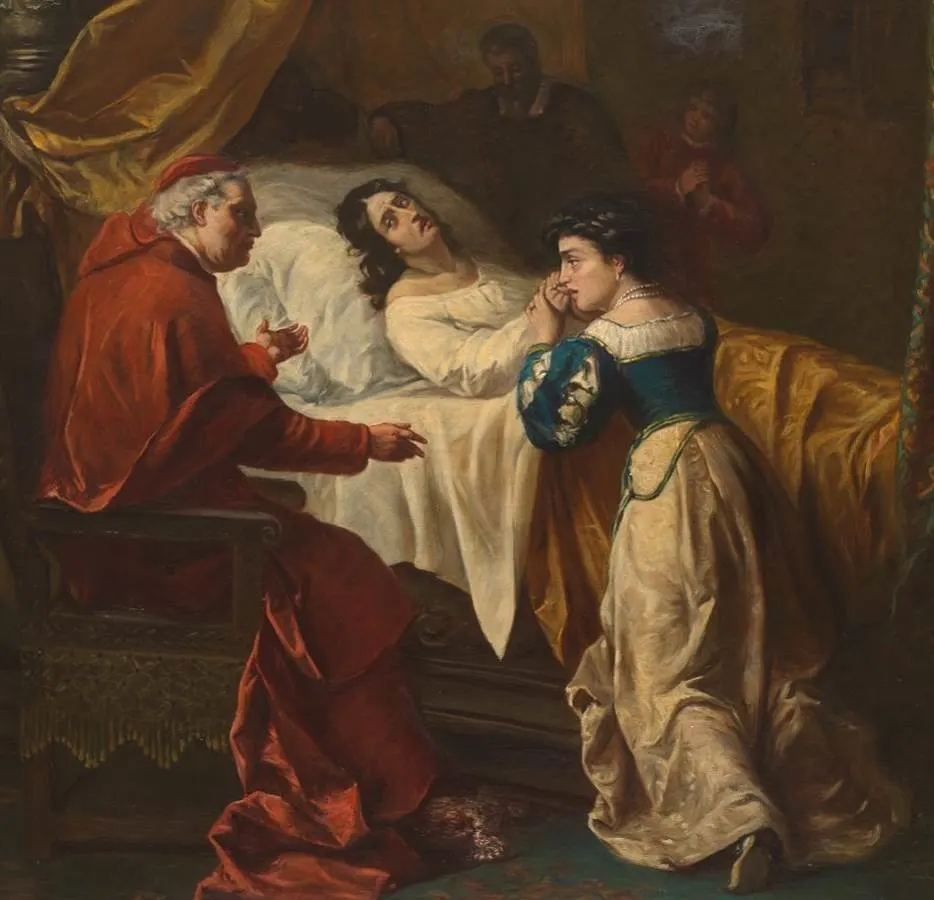
6. She probably served as the model in several of his other paintings
Raphael often painted beautiful women and several of his famous works are believed to have been inspired by his Roman muse. Some of these are:
- Madonna della seggiola
- Madonna di Foligno
- Transfiguration
- Ecstasy of Saint Cecilia
- Triumph of Galatea
While many of his paintings certainly feature women that bear a striking resemblance to Margarita Luti, it’s fairly certain that he idealized many of these figures to paint what he deemed to be perfect beauty.
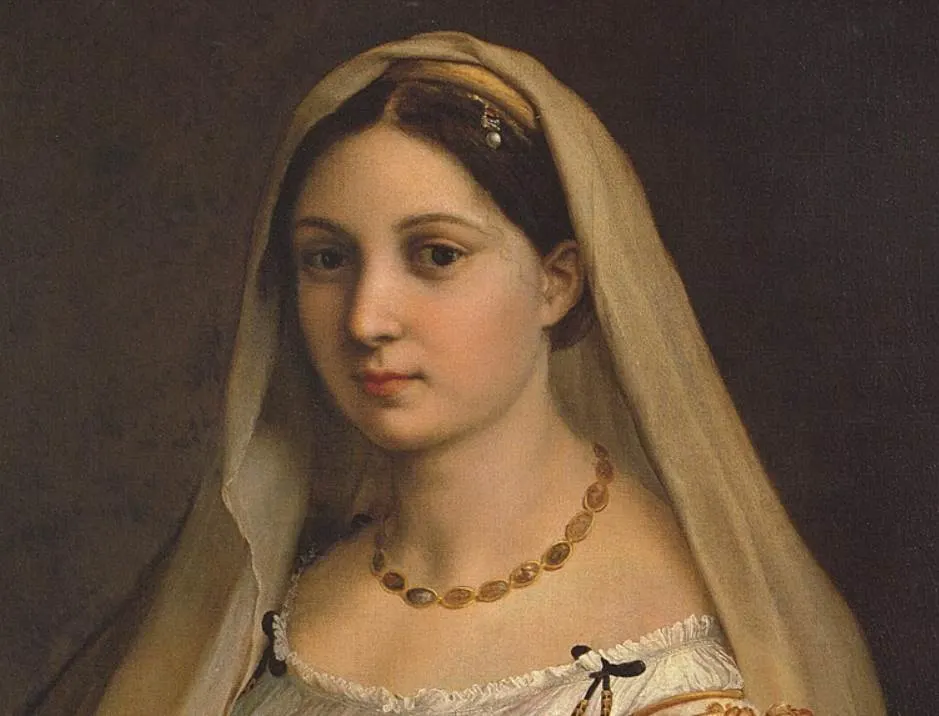
7. How big is La Velata by Raphael?
It’s likely that Raphael painted these portraits of his distress for his personal collection. He was a very busy man so these are relatively small works.
La Velata by Raphael is an oil on canvas painting that has dimensions of 82 × 60.5 centimeters (32 × 23.8 inches).
8. Where is the painting located today?
La Fornarina was present in his studio when he died and can now be admired at the Galleria Nazionale d’Arte Antica which is housed at the Palazzo Barberini in Rome.
The history of La Velata is more obscure as the painting is not in Rome anymore but in another city where Raphael spent extended periods of time.
It hangs in the Palatine Gallery of the Palazzo Pitti in Florence. This is a department of the Uffizi Gallery, one of the most amazing museums in the world that features a stunning collection of paintings.

